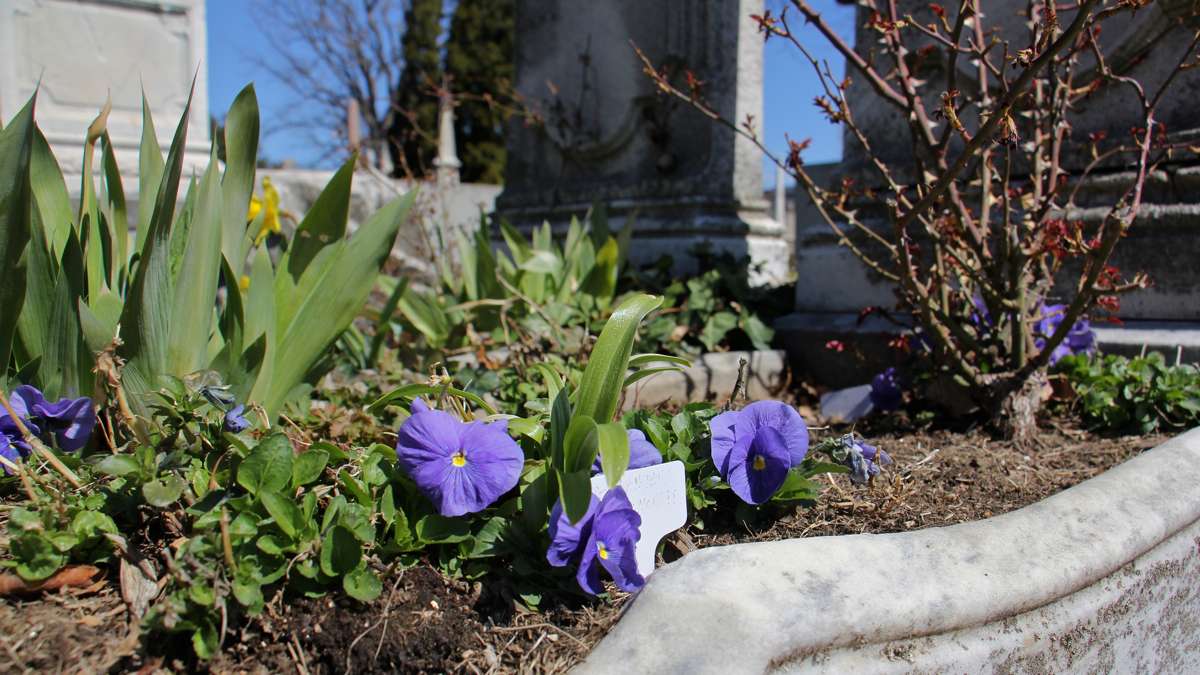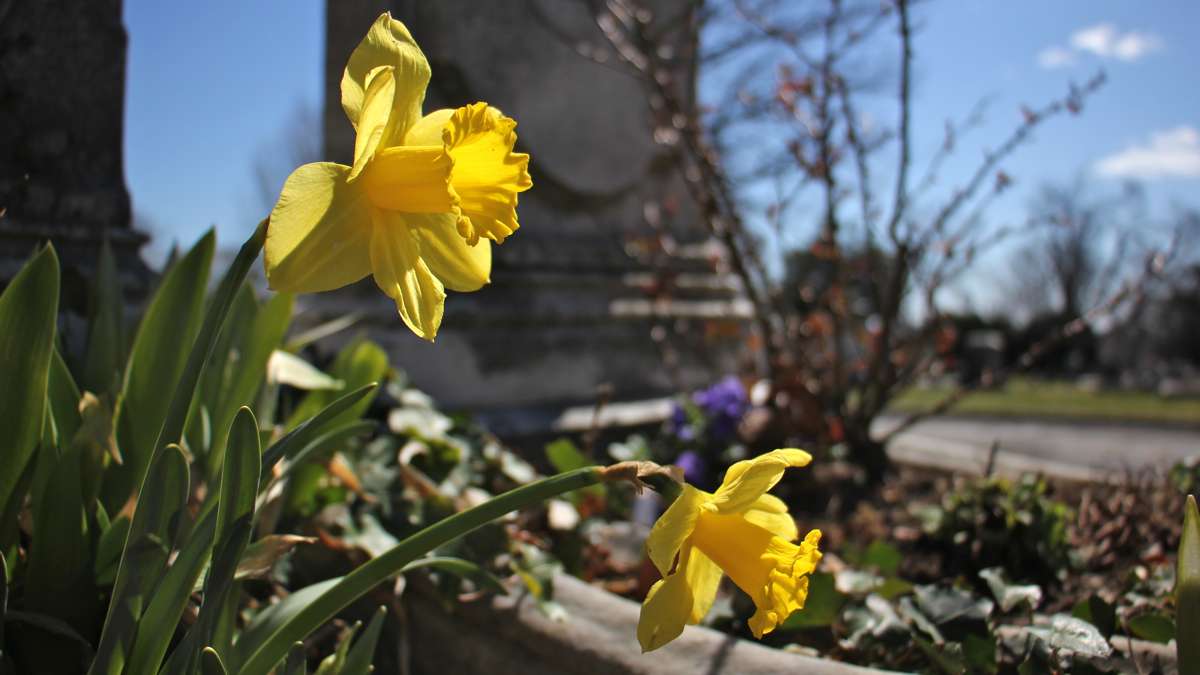Grave gardeners bring Victorian blooms to West Philly’s Woodlands
ListenThe forecast for this weekend will be great for gardening: warm, and maybe a little wet.
Volunteers will be out in force at West Philadelphia’s Woodlands Cemetery, planting gardens on top of the dead.
They are the grave gardeners.Some of the oldest graves at the Woodlands date back to the 19th century, and most are the worse for wear. The elements have worn away the name on some headstones, and nature has run rampant over the Victorian-era gravemarkers.
“We call them cradle graves. They are also called tombs ‘in the French style,'” said Jessica Baumert, the executive director of the non-profit that is slowly bringing the historic property back from neglect.
“They have a headstone, a footstone, and two side slab pieces — so they are basically planters,” she said. “All of them were grown over with grass, and had no flowers in them.”
These grave markers were designed for plantings, a task that would have fallen to the family of the deceased. But these graves are more than a century old; descendants, if there are any left, don’t come around anymore.
While Baumert has no budget for a gardening staff, she has developed excellent relations with the West Philadelphia community. She put out a call for volunteers to plant and maintain miniature gardens inside gravestones.
With one condition: the plants had to be historically accurate to the Victorian age.
“Old plants smell more fragrant, I think they are more beautiful,” said Baumert. “It’s a different aesthetic to historic plants that fits into the site’s aesthetic.”
The cemetery used to be the estate of William Hamilton, a prominent 17th century botanist. In his day, he was considered one of the most important horticulturalists of the American colonies. Baumert tries, as much as possible, to stay true to Hamilton.
Last year, Baumert was hoping to get 20 people to maintain 20 graves. To her surprise, four times that many people signed up. This year she identified 120 graves for planting, and got 250 volunteers. She had to turn 100 people away.
The response was so overwlemling, Baumert reached out to the Pennsylvania Horticultural Society for help.
“What’s more romantic than a cemetery growing flowers?” asked Nicole Juday Rhodes of the Horticultural Society. In her spare time, she likes to wander historic cemeteries looking for historic, vestigial plants, and take cuttings of them.
“The plant I find more than any is Sweet William,” she said. “I don’t know why, but you can imagine all the sweet Williams buried at cemeteries over the last several centuries, that would have been the plant planted on their grave to remember them.”
Rhodes put together a spreadsheet of historic plants and the conditions in which they thrive. Some like to grow in the shadow of a headstone. Some will withhold bloom until autumn, “that season,” as Jane Austen wrote in “Persuasion” (1817), “of peculiar and inexhaustible influence on the mind of taste and tenderness — that season which has drawn from every poet worthy of being read some attempt at description, or some lines of feeling.”
To nobody’s particular surprise, many of the grave gardeners are also fans of Romantic literature.
“It’s a wonderful story you can build up in your head of people that are buried here. It would have been planted with the favorite flowers of the people who had died,” said Rhodes.
Many of the volunteers research their grave’s deceased residents to find appropriate flowers. Mary McGettigan found out her guy, a young many named J. Dewitt Jayne (1850 – 1875), was the son of Dr. David Jayne, a prominent Philadelphia physician who made a fortune selling patent medicines.
“I put in blood root, peppermint, spearmint, and something called gaultheria — also called wintergreen,” said McGettigan. “Those were all ingredients in patent medicines.”
That was part of the appeal to McGettigan, an art historian and preservationist, is that these graves hold a story, long dead now, and the garden above it should reflect that story.
Another part of the appeal for Grave Gardening is being part of this community of people. Some are gardeners with a lifetime of experience, some are green thumbs who live in apartments with no opportunity to till a yard, and some have never before troweled the soil. They just like the idea of gardening in a graveyard.
“Not to be fall into sexist stereotypes, but it’s hard not to notice the vast majority of the grave gardeners are female,” said McGettican. “There could be a certain appeal of the romantic garden landscape to consumers of romantic literature.”
Sometimes the grave gardeners discover plants that were original to the grave: bearded irises and forget-me-nots that survived abject neglect inside a cemetery, for a century, waiting to be discovered under the mulch.
What could be more romantic that that?
WHYY is your source for fact-based, in-depth journalism and information. As a nonprofit organization, we rely on financial support from readers like you. Please give today.











